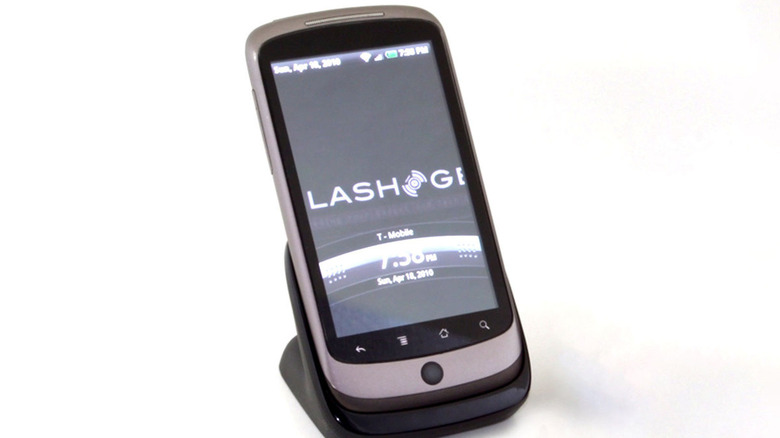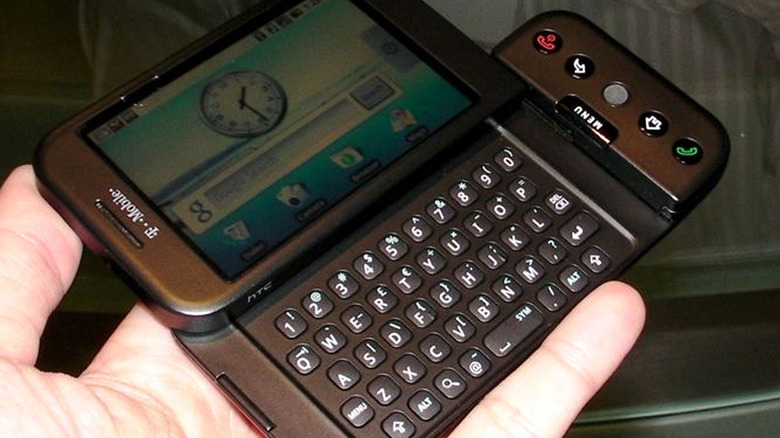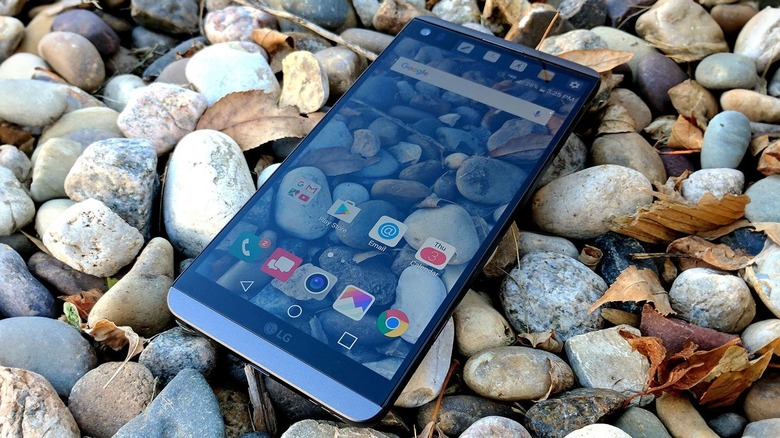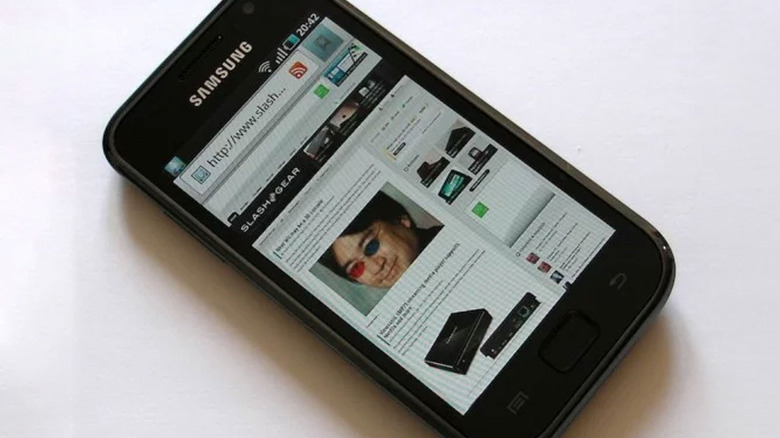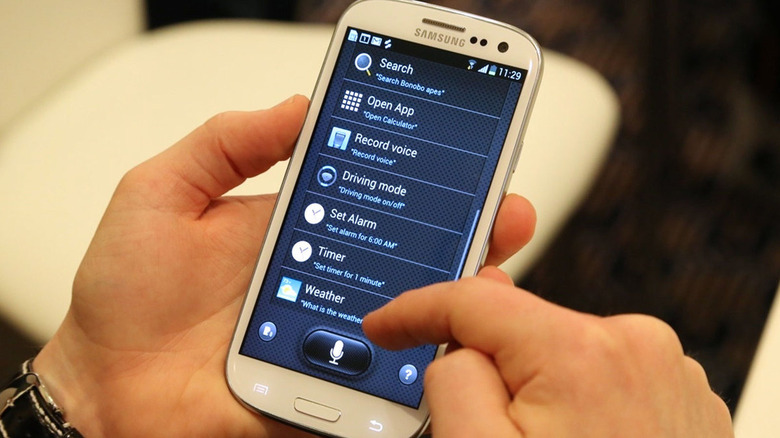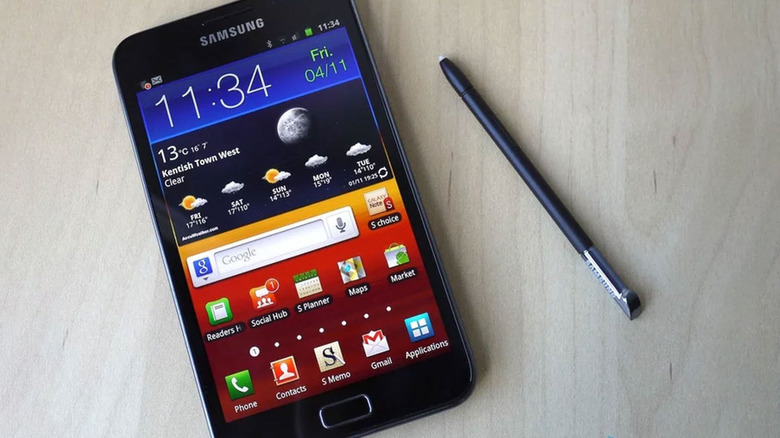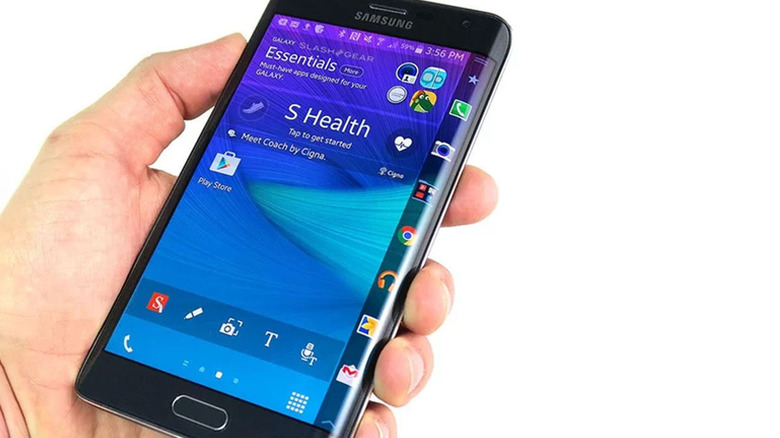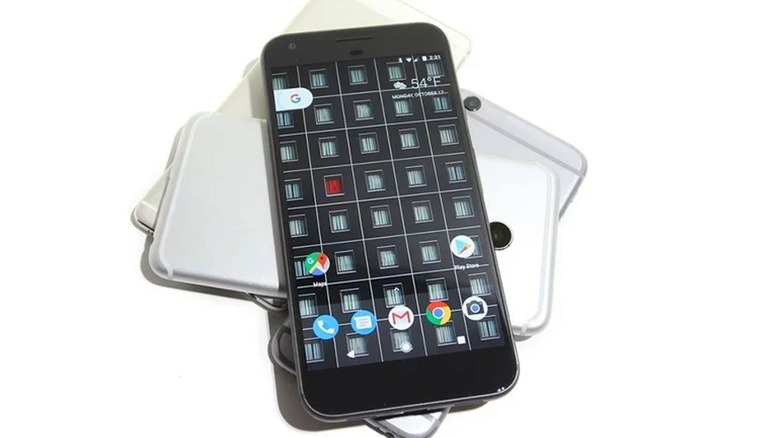10 Of The Most Important Android Smartphones Ever Released
In the fast-paced world of technology, smartphones are more than just communication devices. These powerful pieces of hardware have become the gateways to our digital universe. With its vast and varied landscape, Android has been at the head of this revolution, always making us think differently about what our small pocket devices can do.
Picking the best phones for this list wasn't just about who had the coolest features or the nicest look. We looked for the real game-changers — the Android phones that showed us something new, especially for their time. From the Nexus One that started it all to the Google Pixel, where Google showed what it could do with phone hardware, each phone we've picked has changed the game, affecting not just sales, but how we use our phones every day.
We're looking at Android's rich history, showcasing the phones that have defined — and redefined — the ecosystem of devices we've come to rely on. Whether it was by setting new standards in user experience, introducing us to features we now can't live without, or opening up new form-factor possibilities, these smartphones have been key players in the ongoing evolution of mobile tech. So, let's dive in and explore the devices that haven't just kept up with the times but have been a step ahead, shaping the future of how we connect, create, and communicate. Here are some of the most important Android smartphones ever made.
HTC Nexus One
Launched in January 2010, the HTC Nexus One was an important moment in the evolution of smartphone development, marking Google's grand entrance into the industry. Developed with HTC, this phone was designed to combine high-tech hardware with a clean and easy operating system that would blow the other manufacturer's complex UI out of the water.
The Nexus One featured a 3.7-inch AMOLED display, a 1GHz Snapdragon processor, and 512MB of RAM, putting it at the forefront of smartphone technology at the time. The phone was also notable for introducing features like voice-to-text transcription and Google Maps navigation — tools that have since become staples in the smartphone experience. These additions not only improved the usability of the device but also set new standards for the functionality that users would come to expect. Thanks to its unlocked bootloader, it was easy to customize and compatible with networks like AT&T and T-Mobile to reach as many users as possible.
The Nexus One was more than just an early smartphone. It marked Google's first step into the hardware arena, setting the stage for future devices like Chromecast, Google Home, and the Pixel series. Looking back, the Nexus One wasn't just a piece of technology, it was a glimpse into the future of Google's hardware vision and a cornerstone in the evolution of Android smartphones.
HTC Dream/T-Mobile G1
When it comes to smartphones, users really only have two options, Android or iPhone. This wasn't always the case. There was a time when Apple's iPhone dominated the scene, especially after the launch of the iPod Touch and the first iPhone. However, the release of the HTC Dream marked a significant turning point. Known also as the T-Mobile G1, it was the first smartphone to run on the Android operating system, signaling the start of a new era for Apple's competition.
The HTC Dream/T-Mobile G1 had some innovative features for its time but many haven't aged well. Instead of a touchscreen keyboard, the Dream came with a physical, foldout QWERTY keyboard. It was also among the first smartphones to include Google services integration. Back in 2008, Google's services were much more limited than they are today, but the HTC Dream offered a sneak peek into what the future of mobile technology and services integration could look like.
Today, foldout keyboards are a thing of the past, but the HTC Dream was ahead of its time when it came to Google integration. Unfortunately, it was carrier-locked, so even if you could find one now it's essentially a curio of the past and completely unusable other than as a piece of tech history.
LG V20
The LG V20 was a pioneer in several ways. Notably, it was the first smartphone to run Android Nougat, or version 7.0, right out of the box. Being the first to get this update was significant because it introduced enhanced file encryption and beefed-up security measures, allowing for better security measures, something that phone manufacturers are constantly striving to improve. Data security has only become more important since then, while the LG V20 was one of the first to take advantage of these improved encryption features.
Despite its trailblazing features, the LG V20's impact was more of a quiet revolution than a market shake-up. Its sales were decent but not stellar. The tech world moves fast, and sometimes being too ahead of the curve means not all innovations land with a splash. Overall, the LG V20 may not be remembered as a game-changer, but it carved its niche by catering to specific user needs, being an early adopter of features, and offering customization options.
OnePlus One
Back in 2014, smartphone companies were trying to outdo each other with flashier displays, faster processors, and better tech. Each year, new models would come out bigger, better, and with much higher price tags than the year before. This set the stage for the OnePlus One.
The OnePlus One was dubbed the "flagship killer." It was designed to compete with the flagship phones of every other major company like Samsung and HTC, and it had a secret weapon: its price tag.
Packed with processing power on par with its main competitors, the OnePlus One could keep up with the Galaxy S5 during its release in 2014. The OnePlus One was priced between $250 and $300 compared to the S5's $600-$700 price tag, making it an easy choice for many people, especially those on a budget. It was also one of the first smartphones to adopt a Type-C charging point and wasn't pre-loaded with bloatware. Everything about the OnePlus One screamed economy and efficiency.
While it had its share of glitches, the OnePlus One proved that high-quality, budget-friendly phones were in demand. It wasn't the "flagship killer" that it wanted to be, but it did fire nasty warning shots at every other manufacturer: Simply making phones faster and more expensive wasn't going to cut it anymore. As smartphones became a staple of daily life, the market for affordably priced models grew, and the OnePlus One was at the forefront of recognizing and catering to this shift.
Galaxy S
With the recent release of the Galaxy S24, it's time to look back at the original that set the stage for Samsung smartphones. The S series was first introduced in 2010 and was well-received by consumers. It quickly became one of the premier Android phones on the market and helped the S series become an established innovative brand.
Without the original success of the first Samsung Galaxy S, the smartphone marketplace could look completely different today. The commercial success led to many of the innovative features that became staples in the industry, while some innovations didn't quite stick around. Among the notable firsts, the S series brought curved displays with the S6 Edge, water resistance with the S7, and fingerprint sensors with the S5.
Over the years, the S series has proven to be an innovator with a solid track record that all stems from the original design and philosophy of the first in the series. Marketed as a premium smartphone, the S1 came with a hefty price tag ($669 to $699, which was indeed hefty in 2010) that limited its reach to those who could afford it. It was the subsequent models that broadened the S series' appeal, making it the widely recognized and respected brand it is today.
Galaxy S3
There were several reasons for the success of the S3 and why it helped change the smartphone marketplace. The third iteration of Samsung's Galaxy series took all of the lessons of the first two versions and made everything better.
The S1 was great, but had a blocky shape and still had plenty of room for improvement. The S2 was better overall, but many people disliked the shape and size of the design. Then came the S3, which not only enhanced the design but also boasted a screen that was among the brightest and biggest you could find at the time.
It's also hard to talk about Android phones without talking about the iPhone. When the S3 came out, it was up against the iPhone 4 — at a time when Apple was pretty much the king of the smartphone hill, and alternatives were few and far between. The S3 managed to hold its own, offering something different at a time when both consumers and cellular companies were looking for options. Thanks to heavy subsidies from phone carriers, the S3 became an attractive choice for those who were either looking for something other than an iPhone or needed a more affordable option.
Galaxy Note
Cell phones had some odd growing pains. They started as huge bricks, then got so tiny they became the butt of a series of jokes in movies and TV shows aplenty. But when smartphones came along, things changed again, and phones started growing. The Galaxy Note was the first to bridge the gap between smartphone and tablet creating the hybrid-like phablet.
The Note bucked trends by creating an oversized touchscreen device that wasn't comically large (like someone taking a picture at a sporting event with an iPad) but also wasn't prohibitively small. It combined the best of both worlds by still being portable enough to fit inside of a pocket (although, let's be honest, it didn't always fit in women's pockets because those are just too small) but large enough to see more on screen than before.
This change showed us that people were looking for bigger screens on their phones, a far cry from the flip phones we used to have. And this hasn't changed — every new phone model seems to be a bit bigger or comes with an "XL" version. It seems like, when it comes to our phones, we're all in for seeing things on a bigger scale.
Galaxy Note Edge
The Edge model really brought home the idea that bigger can indeed be better in the smartphone world, and it didn't stop there. It also got attention with its unique design feature — a curved edge on the side of the phone. This wasn't just for looks; the curve was a fully functional touchscreen that ran the length of the phone, giving it a distinct edge over traditional flat-screen phones.
This innovative curved screen acted like a quick access bar, similar to a PC's start menu, allowing you to easily reach your favorite apps right from the side of your phone. You could even customize it to show handy information like the weather, stock updates, or notifications, all without having to navigate away from what you were doing.
The Note Edge proved that there was still innovation in the world of smartphones and people were ready for it. Though the Edge feature ended up being more gimmick than groundbreaking, it was a clear sign that people were eager for fresh, innovative ideas in their tech. However, the Edge had its downsides. It was prone to accidental bumps and misclicks, and if you were left-handed, the design didn't really work for you unless you flipped your phone upside down. Despite these quirks, the Note Edge's venture into new design territory showed just how much excitement there is for breaking the mold in smartphone design.
Samsung Galaxy Fold
In the early days of cell phones, flip phones had style. It seemed like every person you met had a completely different style of phone, and phones like the Razr or Sidekick ruled the schoolyard. But then, smartphones came along, and suddenly, almost everyone's phone started to look the same: just a flat, rectangular screen. That's until Samsung brought science fiction to life with the Galaxy Fold.
The Galaxy Fold felt like something out of a sci-fi movie. It was the first foldable smartphone that you, an everyday average consumer, could buy. At first glance, it looked like a normal smartphone, albeit a bit thicker, but then you could fold it open for a glorious double-wide touchscreen. It's the kind of whimsical innovation that harkened back to the original cell phones, but combined practicality with the all-important cool factor.
The original Galaxy Fold did have a few growing pains, however. The device did have a noticeable crease on the inside fold of the phone which became an apparent blemish. This was later remedied in variations with a beveled fold that extended the life of the screen, but the first iteration simply wasn't as durable, and for the high price tag, it was a glaring flaw.
Despite these initial bumps, the Galaxy Fold showed us that phones don't have to follow a one-size-fits-all approach. It opened up a world where smartphones could be stylish and different again.
Google Pixel
Even the most tech-averse people in the world know the name Google. It's become synonymous with internet searches. The release of the first Google Pixel was yet another feather in the tech giant's hat.
The Pixel marked Google's entry into the premium smartphone market. When the Pixel first arrived on the scene, it essentially announced that Google planned to directly compete with Samsung and Apple for its piece of the pie. Even in their ads, Google pulled no punches. The ads made fun of Apple for ditching the headphone jack, which the Pixel kept, with the line "3.5mm headphone jack satisfyingly not new."
The Pixel changed the game. It was simple and clean, focusing on making Android OS work well, getting updates fast, and having some useful features you couldn't get anywhere else. The camera on the Pixel was really good, too, largely due to its advanced image-processing software.
Though the Pixel's 40-million-plus unit sales figures might not seem as remarkable compared to the iPhone and Samsung, which sell hundreds of millions of units, it's important to note the significant progress and growing popularity of the Pixel as a newcomer in the smartphone market. Who knows what the market will be like years from now, but if Google ends up outpacing them, it'll be the first-generation Pixel that started it all.

